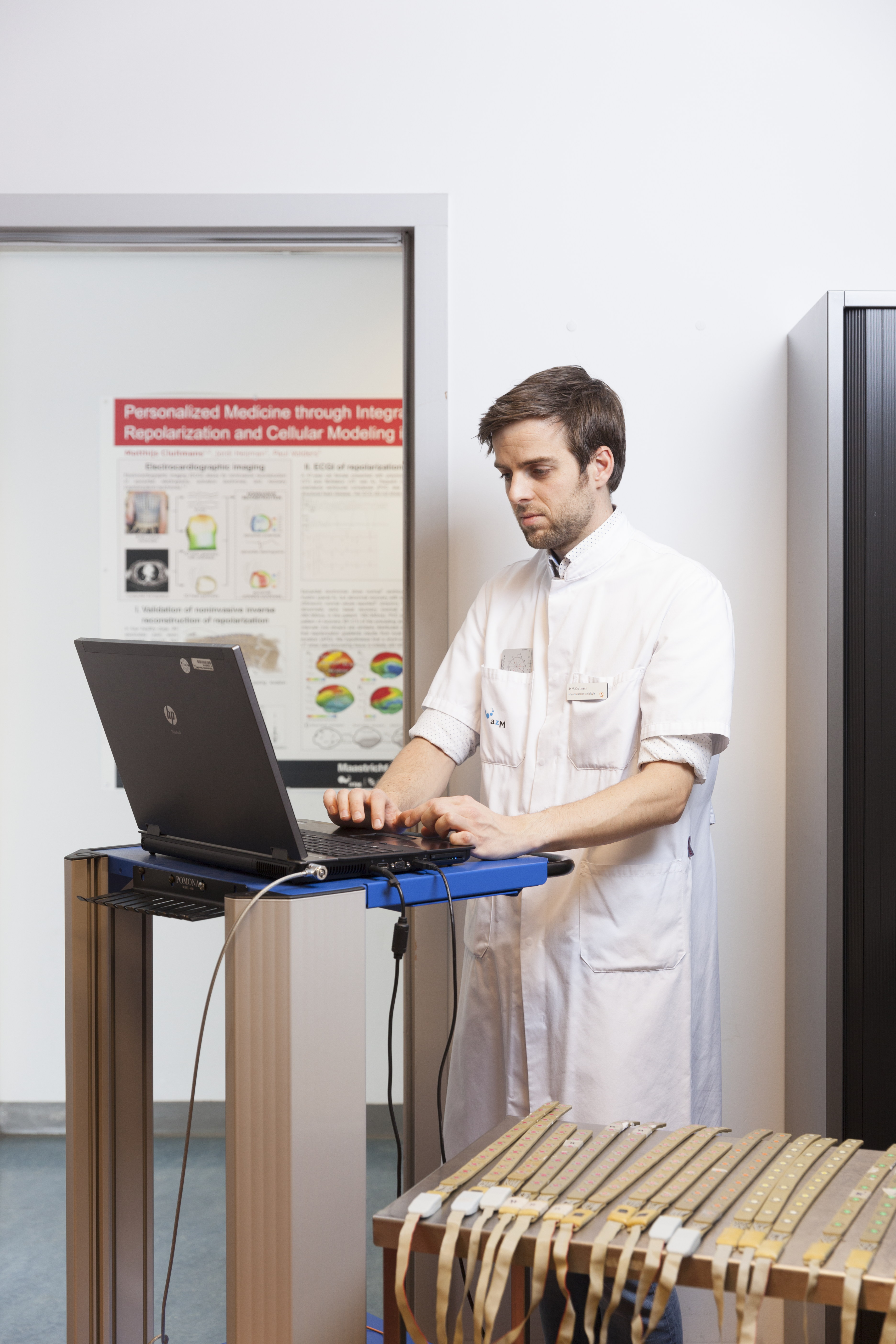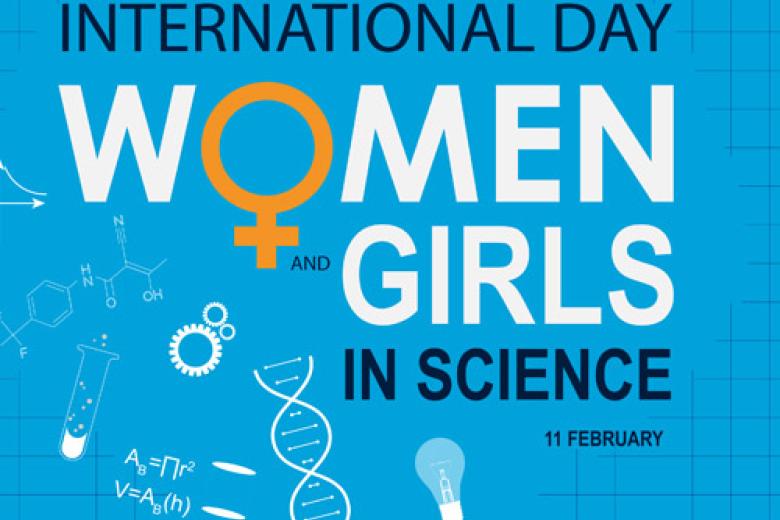The hybrid researcher
Research that transcends individual disciplines is highly regarded in academia, yet known to be incredibly challenging. Matthijs Cluitmans demonstrates that it is not only possible, but also of great added value. He obtained a joint PhD in 2016 from the Department of Data Science and Knowledge Engineering (DKE) and the School for Cardiovascular Diseases (CARIM). Before that, he studied both disciplines in Maastricht, and he now works for both institutes as well as at Philips Research. “As a mathematician it’s not something I’m supposed to say, but in this case one plus one really does equal three.”
When he started his medical studies in Maastricht, Cluitmans intended to become a doctor and researcher. But to nurture his technical talents as well, he simultaneously did a bachelor’s and master’s at the DKE. Starting in 2010, he combined his medical internships with a PhD. “Jordi Heijman had already been accepted to do his PhD half at the DKE and half at CARIM. So both places had two half-time positions available. I’d become fascinated by research involving patients and was very happy with the appointment.”
Electrocardiographic imaging
By the time he finished his internships in 2014, he knew he was more into research than patient care – as long as it was technically challenging, and of direct relevance for patients. He defended his PhD on electrocardiographic imaging (ECGI) in 2016. This technique is similar to the better known ECG, which reveals how electrical impulses in the heart are expressed on the surface of the skin, but uses more electrodes and therefore provides a much more detailed picture. Combined with a CT scan, it can localise subtle abnormalities in the electrical impulses of the heart.

The hypothesis is that these abnormalities play a role in sudden arrhythmic death syndrome, which has caused the unexpected death of a number of footballers and many other apparently healthy people. To investigate this theory, the Vigilance study was recently launched in Maastricht, Amsterdam and Utrecht with support from the Dutch Heart Foundation. And Cluitmans – having grown ever more intrigued by this interdisciplinary research ultimately seeking to improve patient care – was allowed to stay on. He now works three days a week for CARIM and two days for Philips Research in Eindhoven. He also holds a zero-hour appointment at the DKE, where he tries to be physically present one day every two weeks. Because as experience has taught him, getting together with people in person is one of the keys to successful interdisciplinary collaboration.
Mathematical twist
What is special about his PhD project is that the DKE and CARIM teamed up to build an ECGI system themselves. This has the advantage of allowing the researchers to alter the settings themselves. “Not to take anything away from my medical colleagues, but without my maths background I’d never have been able to write this dissertation. As a mathematician you can give your data analysis a slightly different twist, which makes the results much more clinically relevant.”
One of the main challenges of a joint PhD project, says Cluitmans, is the communication between disciplines. “My supervisors on both sides, Paul Volders from CARIM and Ralf Peeters and Ronald Westra at the DKE, are very appreciative of one another. I have no doubt that it’s thanks to their personal click that projects like this can succeed. But they speak different languages, and it’s up to you as a new PhD candidate to keep the project on track. We had many good discussions that led to interesting ideas. And I learnt to work independently and to pursue my own ideas – essential qualities in a researcher.”
“The synergy between clinical and theoretical-scientific researchers at the Faculty of Health, Medicine and Life Sciences and the Faculty of Humanities and Sciences in Maastricht laid the foundations for this PhD project. An inter-faculty connection for this sort of work is essential, but by no means automatic. In that sense Matthijs’s project, with its perfectly smooth integration in two faculties, was ahead of its time.”
Paul Volders, cardiologist and professor of Genetic Cardiology, CARIM
Building bridges
His background in both worlds enabled him to build the bridge between the two, and Philips Research also spotted this added value in him. “Apparently I always have to do several things at once”, he smiles. There he is working on a computer model that can be used to simulate the small heart abnormalities he aims to make visible with ECGI. “I try to bring my work for Philips and UM together; I think that’s the added value of myself as a researcher and of our collaboration. And at Philips I can learn a lot about eventually getting these techniques to patients in an affordable way.”
It is clear that in his hybrid role he feels like a fish in water. “I’m sort of the glue between doctors/researchers, mathematicians and now also the business sector. That interaction really helps you move forward. As a researcher, it’s better for your CV if you join a different lab after getting your PhD, preferably abroad. But for the type of research I’m doing, Maastricht is the only place where collaboration between engineers, basic researchers and clinicians is flourishing.”
“With his versatility, personal drive and social skills, over the last decade Matthijs has helped us to acquire – out of nothing – a leading position in this special medical-technical field. It goes to show how much potential UM has to lead the way in multidisciplinary research, and at the same time it shows how important the sciences are for UM.”
Ronald Westra, professor of Physics and Mathematics, Department of Data Science and Knowledge Engineering
Also read
-
Meet our women in science
On International Women and Girls in Science day we like to highlight some of UM's women in science.

-
“How sustainable is it? That is the question”
Professor Yvonne van der Meer is investigating how companies can improve the sustainability of their products. She analyses every material, exposing the lifecycle in its entirety.

-
A new life for eggshells
At EGGXPERT, a local startup, two waste products from eggs are put to use in the production of facial masks and wound plasters. Co-founder Chang Liu was one of the first graduates of the master’s in Biobased Materials at the Faculty of Science and Engineering.
